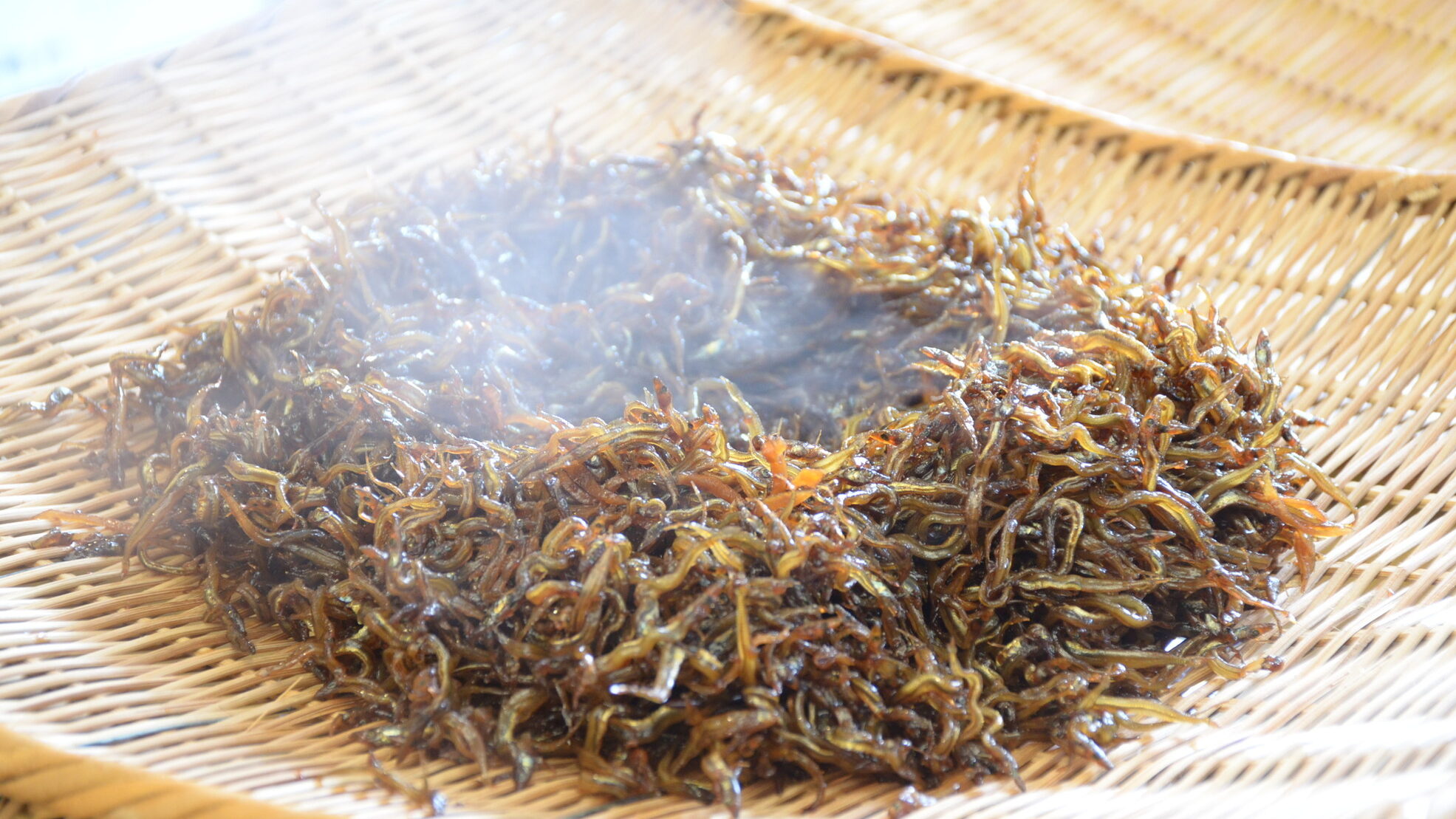
Hey there! Let me tell you about a true taste of Hyogo – “Ikanago no Kugini.” This is a classic “tsukudani” dish, where they simmer tiny baby fish called “ikanago” in a sweet and savory mix of soy sauce, sugar, and ginger. What’s really cool is that it’s been a local favorite along the Seto Inland Sea for ages. The name? It comes from how the cooked fish look like rusty, bent nails. Pretty neat, huh?
Dish Name: Ikanago no Kugini / イカナゴのくぎ煮
- Region / Location: Hyogo Prefecture, especially along the Seto Inland Sea coast (Harima, Settsu, and Awaji areas).
- Primary Area of Tradition: Seto Inland Sea coastal areas (Harima, Settsu, and Awaji areas).
- Main Ingredients: Ikanago (幼魚) (sand lance).
How It’s Eaten / Served
To make “Kugini,” they take fresh, young ikanago (we’re talking small, like 2 to 4 centimeters!) and simmer them in a flavorful blend of soy sauce, sugar, and ginger until it’s sweet and savory. Some folks like to get creative and add a little twist with Japanese pepper, red chili peppers, or yuzu citrus. It’s a fantastic side dish with rice or a great snack with drinks.
Cultural Background and Preservation
“Ikanago no Kugini” has deep roots in the Seto Inland Sea region. People have been making it here for a long, long time. They say it started in Kobe, originally cooked up in the homes of fishermen. But it really took off in the 1980s when some ladies from the Akashi fisheries cooperative created a recipe that was a bit milder and more suited to everyone’s taste. They even held cooking classes to spread the word!
Every year, from late February to April, there’s a short season for catching these young ikanago. You’ll see people lining up at fish stores to get their hands on them. The sweet and savory smell of soy sauce and sugar fills the air as families cook up their “Kugini.” Locals even say that “the smell of ikanago means spring is here.” It’s a true sign of spring in the Seto Inland Sea, and it’s still a beloved part of the food culture.
Back in the day, when the fishing season opened, families would buy ikanago by the kilo and cook up a big batch of “Kugini” to share with friends and family. These days, it’s harder to get because there aren’t as many fish.
You can still find “Ikanago no Kugini” made at home, and you can also buy it at souvenir shops, fish stores, and supermarkets.
The Hyogo Prefectural Fisheries Cooperative is keeping the tradition alive by holding cooking classes and visiting schools to teach kids about ikanago dishes. There’s even an “Ikanago no Kugini Literary Award” where people submit poems and essays, and a “Kugini Contest” where people compete to see who makes the best home-style “Kugini.”
Additional information:
- Ikanago (イカナゴ): Sand lance or sand eel. These small fish are a common sight in the Seto Inland Sea.
- Tsukudani (佃煮): A cooking method where ingredients like fish or seaweed are simmered in soy sauce, sugar, and mirin (sweet rice wine). It’s a way to preserve food and create a flavorful side dish.
The information about regional cuisine featured on this website (Piggy's Grandma of Japan) is summarized and adapted from the Ministry of Agriculture, Forestry and Fisheries of Japan (MAFF) website, "Our Regional Cuisines"Additional commentary is provided based on the unique experiences and perspectives of the site's editors.
The copyright for the original content regarding regional cuisine belongs to the Ministry of Agriculture, Forestry and Fisheries of Japan.
The summaries and adaptations published on this site are intended for informational purposes only. Piggy's Grandma of Japan does not guarantee the accuracy or completeness of this information. For the most accurate and complete details, please refer to the original pages on the MAFF website.


